How to Decorate a Room When You Aren’t A Confident Decorator
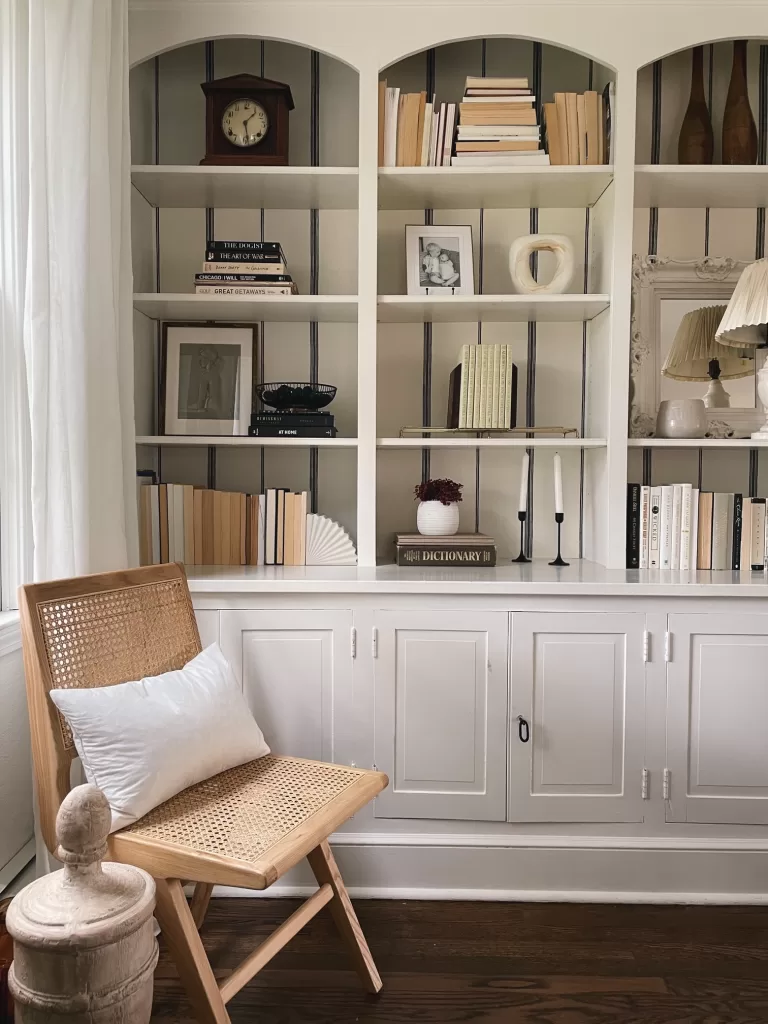
If you’re wondering how to decorate a room so the result is cohesive, intentional and beautiful, but you have no idea where or how to start, pull up a chair and stay for a minute, because I’m going to share my own process that I’ve been using for the last 15 years.
It’s a straightforward process that I learned through lots of trial and error in decorating the nine homes and apartments I’ve lived in or bought for Airbnb. It helps me get clear on how I want the room to look and feel, as well as the function it’ll serve.
Below, I’m sharing my tips, tools, and process. I hope you find it helpful!
How to Decorate a Room For Beginners: 7 easy tips for designing any room in your home
1. Consider functional needs
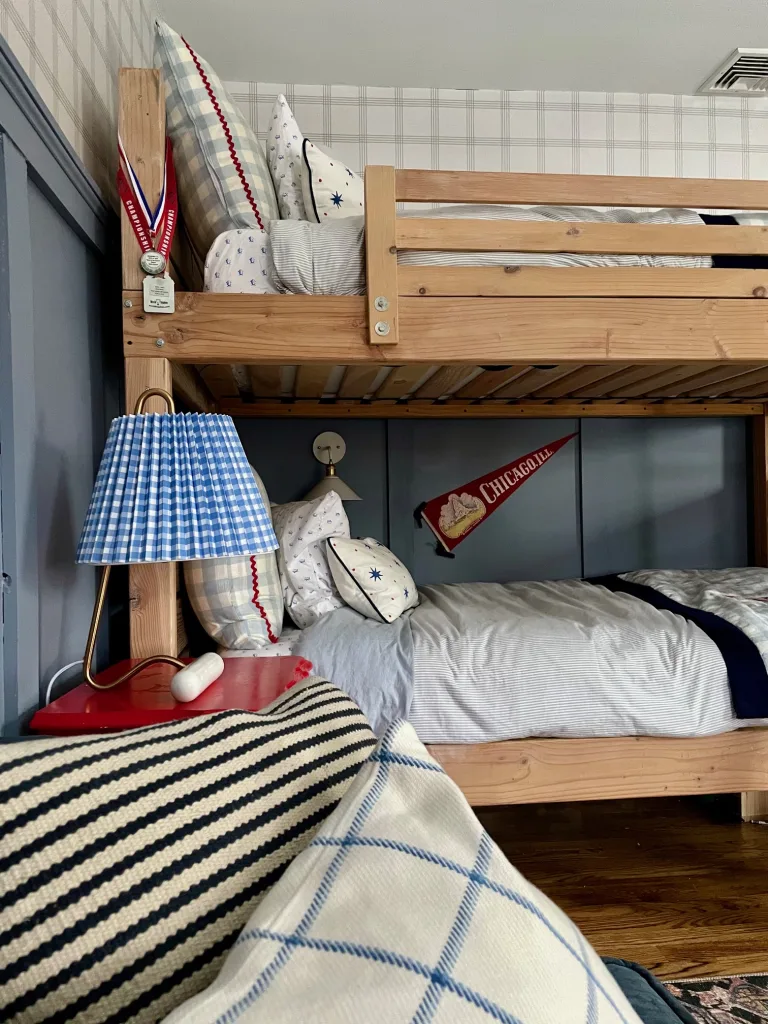
Before I start picking out all the furniture and decor for a room, I always think about the function of the space, because doing this eliminates certain decorating ideas right off the bat.
If you’re decorating a family space where you’ll all pile on the sofa together, you want to make sure that your couch is large enough to hold everyone, and also, most likely made with a performance fabric. If you have three kids under the age of eight, like I do, you also probably don’t want anything that’s overly expensive, so that when someone wipes their face on it instead of using a napkin, you don’t die quite as much on the inside. 🙂
It’s very important to be honest with yourself here. I’ve had some of my biggest home-related regrets when I’ve ignored the function of a space in favor of the perfect look, only to have the room wind up being uncomfortable or unnatural for the way it was used. This usually leads to extra expenses when you end up re-doing the whole room. If you love white sofas but know that one would get destroyed in your home in six months, for example, don’t even look at any inspiration images with white sofas. Look for alternatives that would suit your lifestyle better.
Overall, the biggest functional needs you’ll want to consider are:
Who will use the space? If it’s kids or pets or messy spouses, you’ll want upholstery that’ll stand up to spills and stains, baby proof coffee tables, storage furniture, etc. If you’re an empty nester redoing your formal living space after your kids moved to college, you can go for all the impractical things you’ve denied yourself of all these years.
How will you use the space? Think about what parts of your day you spend in a room, and what you do with your time there. This will help you get together a list of what you need for the room. If you read before bed every night, you’ll want to make sure you have a light near the bed. If you’re working on a kitchen design, do you need lots of storage for your kitchen essentials, or do you prefer takeout and a space that’s more design-led?
These are things you’ll want to keep in mind as you move through the decorating process.
2.. Choose a design style
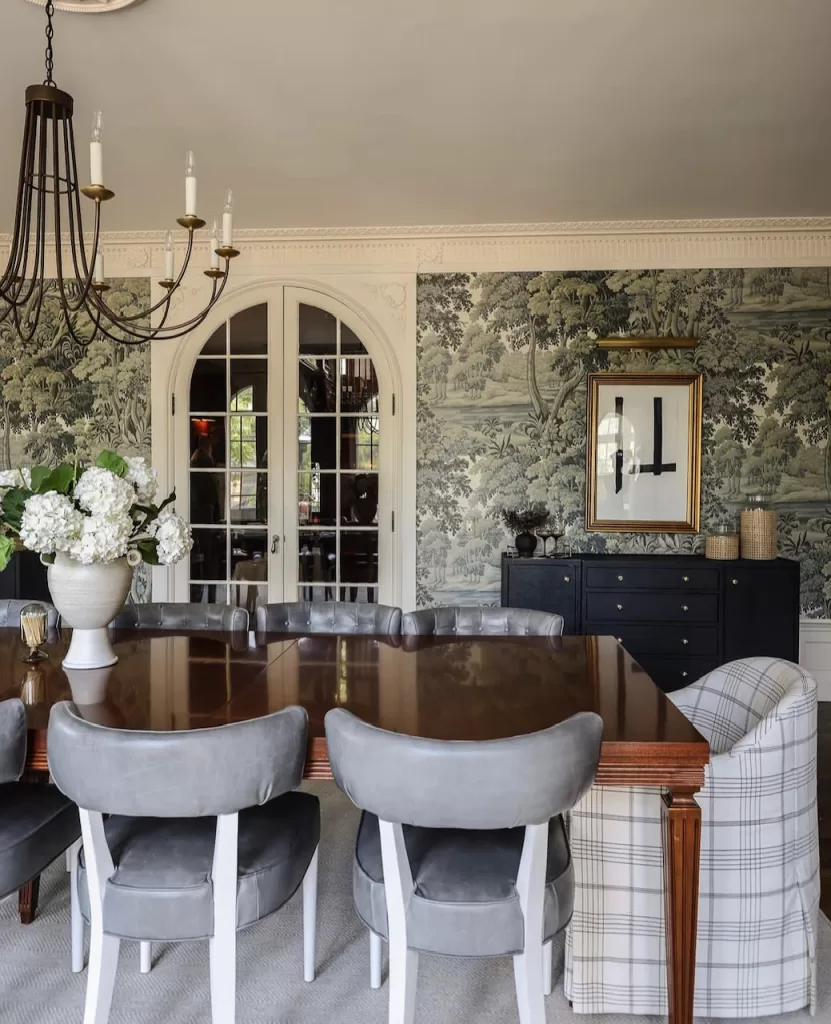
The next step is to narrow down the look you’re going for. It’s like that motivational quote “start with the end in mind.” Decorating without a clear end goal is a recipe for a lackluster space (ask me how I know).
It can be tempting to just head to HomeGoods or Crate & Barrel and see what catches your eye … but there’s a good chance you’ll end up returning or regretting those purchases if you don’t have a plan first.
You’ll find great inspiration images in all the usual places: Instagram, Pinterest, magazines. Save what you love, then whittle down the options until you have your #housegoals photo(s). Make sure your final photo selections feel cohesive so you have a solid design direction. If you’re torn between two spaces in different styles, pick one. Saving photos of every room that catches your eye without narrowing them down will lead to confusion when making decisions later on.
I always suggest two to three photos per space, since more than that can, again, get confusing.
As for how you use your inspiration images, if you’re new to decorating, you may simply want to recreate the look in one of your inspiration photos as closely as possible. Treat the photos as a recipe. If there’s a beige sofa with light wood coffee table and a checkered area rug, go buy those things.
If you’re a little more experienced or confident interior decorator, the photos may just represent a vibe, a color palette, or a general direction you want to go in, so use the images to pull design cues from.
3. Save your inspiration photos on your phone and reference them often
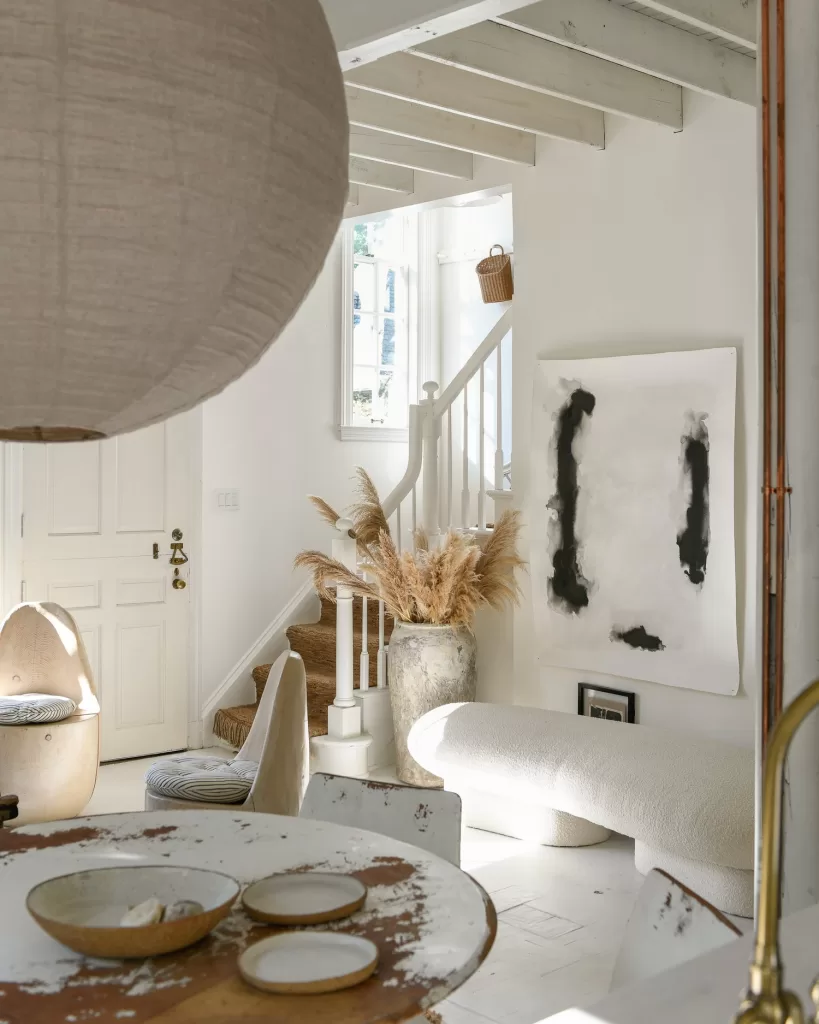
Once you find your inspiration photos, save them in a spot when you can access them easily. I have a folder on my phone, and an Instagram “saves” folder dedicated to my inspiration images for my home. This helps me stick to the plan when I’m out treasure hunting at a thrift shop, or getting lured in by a throw pillow ad on Instagram.
If I’m about to impulse buy something I didn’t plan on purchasing and I can’t decide if it’ll be right for my room, I’ll look back at my images and ask myself if the thing I’m about to buy will help me achieve the vision I have for my space. “Do these little tchotckes in the Target Bullseye Playground fit your aesthetic, Kaitlin? Put them back.”
That doesn’t mean I don’t succumb to impulse buys, because I do. I just try to make sure most of my purchases will get me further down the road I want to go in for my decor, and not take me in a totally different direction that I didn’t want it to go in.
If you want a neutral, organic modern living room, don’t buy shiny brass shelf decor or brightly colored coffee table books, for example. No matter how cute they are or how much they’re marked down, I’m tellin’ ya it’ll throw off your whole vibe.
4. Label your style
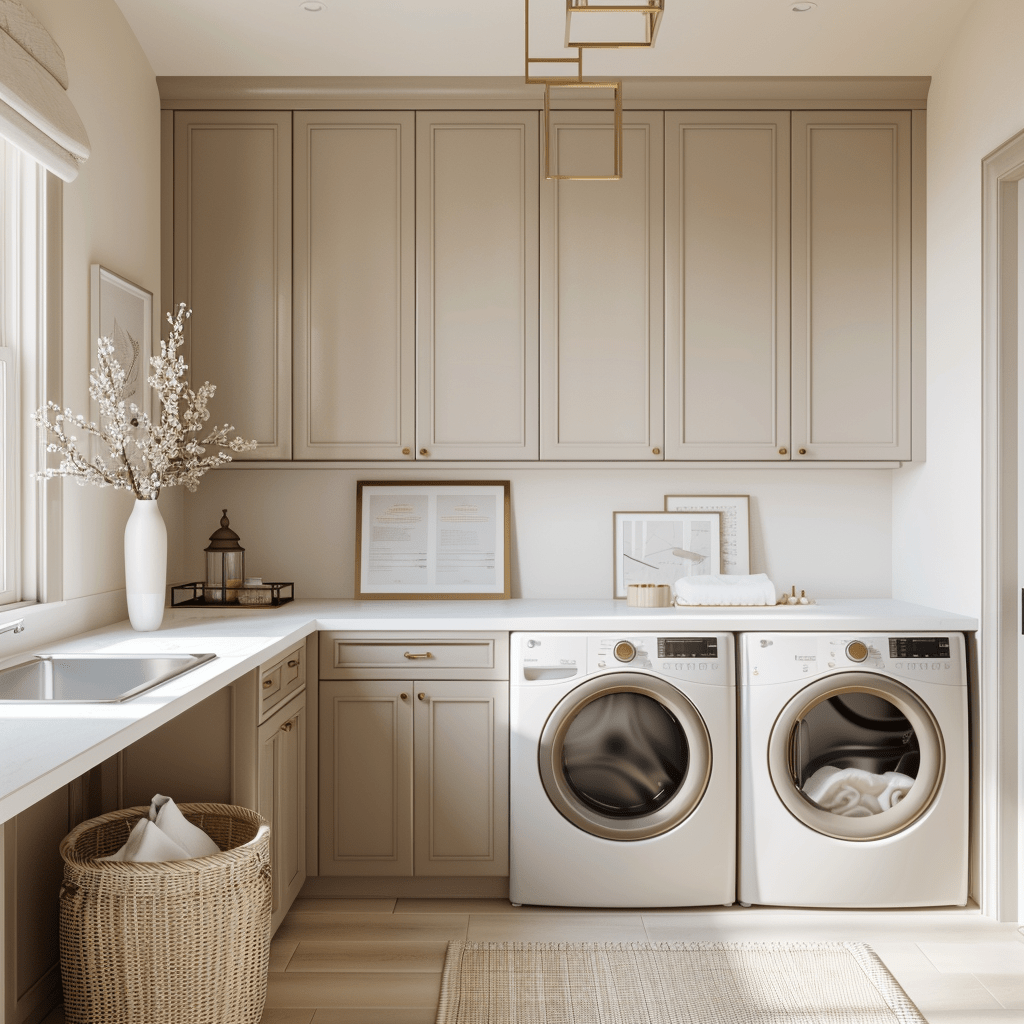
Another thing that can be helpful is labeling what your style is and what it’s not. This doesn’t have to be a prolific mission statement. Just a couple of adjectives that feel right.
I like to say that my style is a fresh traditional.
I also like to label what my style is not. It’s not contemporary, farmhouse, or overly trendy.
This also helps me come back to the core direction I’m trying to go in when I’m choosing things for my home.
You may or may not find this practice helpful. If you have a hard time putting words to your style, you can skip this step and stick with your photos instead!
5. Find an inspiration item

Yes, there is a lot of inspiration gathering in home decorating.
In addition to your overall inspiration photos, it’s important to have an inspiration item or two, also. Inspiration items help make the ideas in your inspiration photos more concrete, and give you something to work from.
For me, inspiration pieces are usually details or decor, like pillows, rugs, bedding, or wallpaper, that I can then use as a jumping off point for the rest of the room. These types of items usually have a pattern, or multiple colors/shades, which I then use to pick a color palette for the room (more on that in a bit).
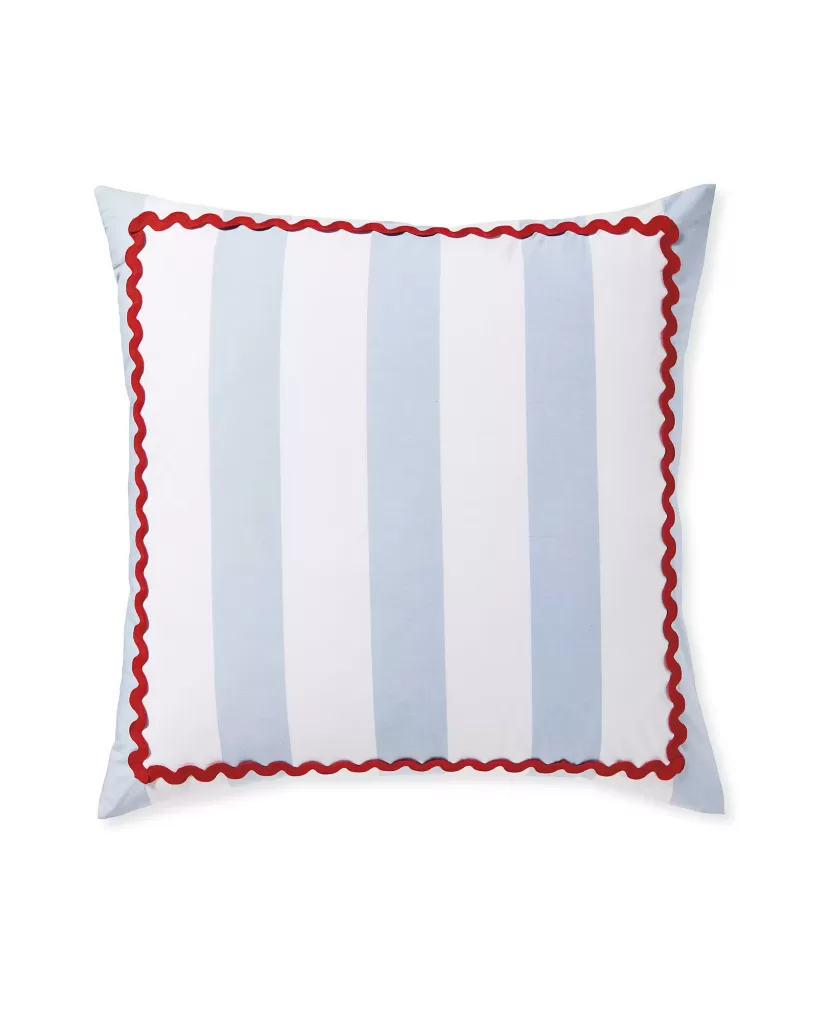
When I decorated my sons’s bedroom in its first iteration (before we went with bunk beds),my inspiration piece was the throw pillows on their beds, above. As soon as I saw these Serena & Lily Beach Club throw pillows, below, I knew I wanted them in their bedroom, so I used these as the inspiration to work from.
(However, I ended up recreating them with a gingham fabric because I didn’t want to spend $300 on pillows for little boys). I pulled out the red, white and pale blue colors, and then offset them with a dark blue.
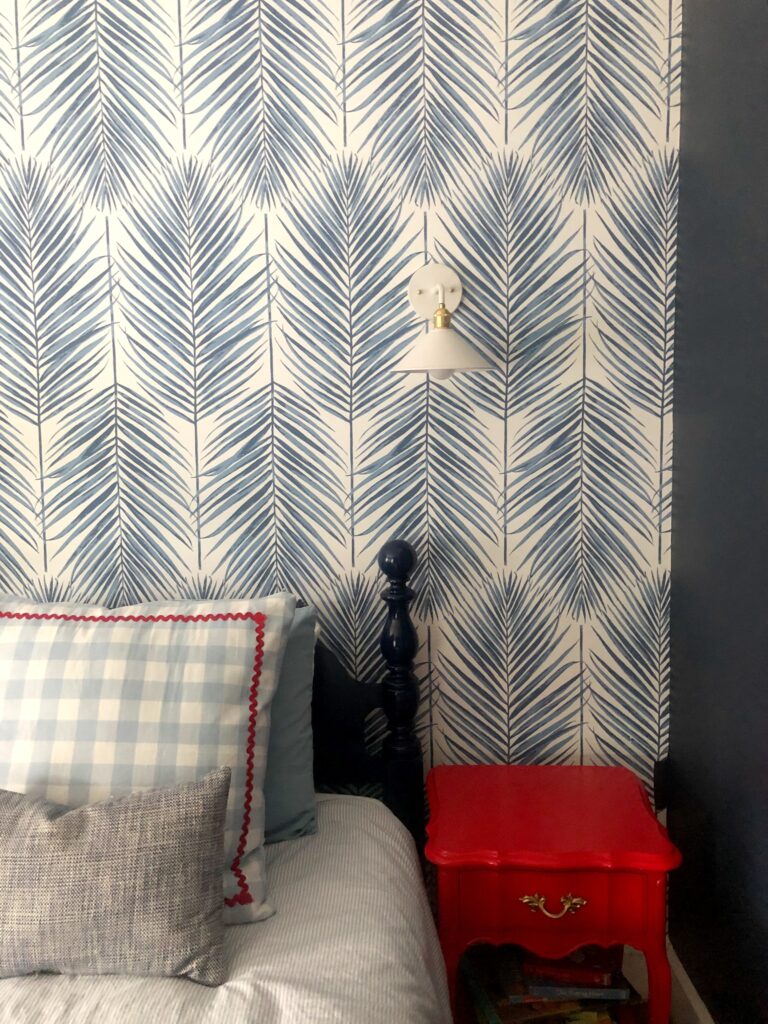
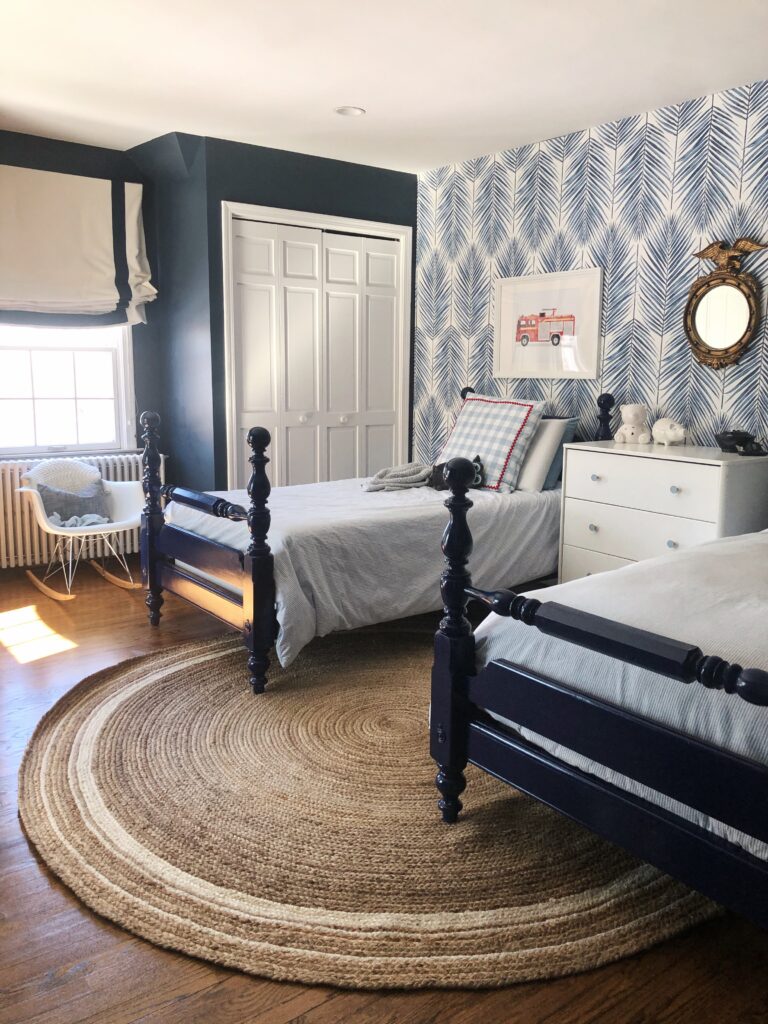
Things like a single sofa or a paint color, to me, feel too simple to be an actual inspiration piece (unless the sofa has an incredible pattern or fringe detail or something interesting about it). Instead I treat these simpler items like a sub-inspiration piece, in that you can know you want to work a camel mohair sofa into your room, but you’ll just need a little something else to help you figure out all the other elements of the room.
So, if you have your dream sofa (or headboard or coffee table), choose one more items, like a throw pillow, or a piece of art, that works with that piece to give you a more concrete direction.
6. Take measurements and consider the floor plan
Before you start selecting specific items for your moodboard (spoiler alert! That’s step 7), it’s time to measure your space to see what’ll fit. That way, you can narrow down your search to only the pieces that will work in your space.
I like to measure the room dimensions and ceiling height, and jot them down in my phone notes. If you have any other measurements you’ll need to know, like how much space you have along a wall for a console table, or how wide a sofa can be without impeding on a walking path, record those in your notes, too.
7. Create a moodboard
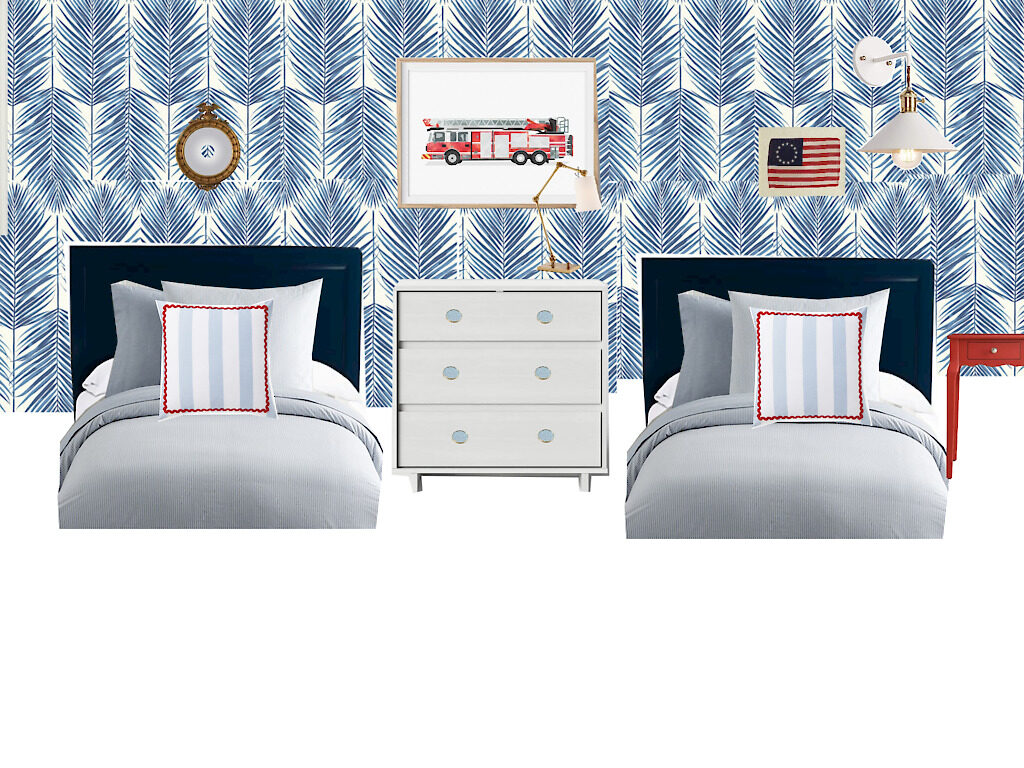
I am a huge fan of mood boards. I need to visualize how things will look before I buy them, because what works in my head doesn’t always work in real life. Often, colors that I think will go together actually clash, or I realize that I have too many patterns, etc.
Gathering items together virtually before you buy them helps you make tweaks to the design a whole lot easier than you can return a 112″ sectional sofa that wasn’t quite right. I put paint colors, furniture, wallpapers, decor, lighting, rugs, curtains, etc, on my mood boards.
I have a whole post on my favorite tools to make an interior design moodboard if you haven’t done it before. Some are free, others are paid, all are easy to use.
Don’t skip this step! It’s literally the most important part.
8. Narrow down a color palette
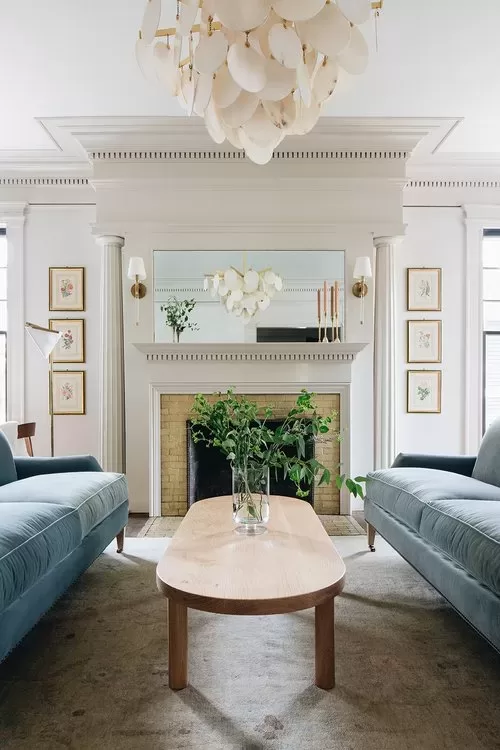
I could also call this step 7-A since I usually narrow down the color palette at the same time I’m working on a mood board. They kind of go hand-in-hand.
Your color palette is arguably the most important factor in creating a room that feels cohesive and intentional.
I like to have 3-4 colors in a room, 1-2 main colors, and 2-3 accent colors. Unless you’re a super talented interior designer, resist the temptation to bring every color you like into one room. It’s also a good idea to consider tones like metals, woods, and stone surfaces, and how those will influence the colors you use.
Again, the easiest way to find a color palette is to look to your inspiration item and pull colors from there.
9. Stick to the plan
Overall, the most important thing to remember when decorating a room is that once you decide on a plan for your room, stick to it! When I was decorating my bookshelves, seen in the first image of this post, I kept trying to add blue things. I love blue. It’s one of my favorite colors. And I have lots of blue decor, so why not?
But the room plan I’d laid out didn’t have any blue! And going with blue decor would be completely changing the direction of the room, which I wanted to be a soothing and neutral living room used mostly by adults.
So, I had to shelve my love of blue (get it?), choose things that were neutral, and tell myself that I could use blue somewhere else. The end result is that I LOVE how my bookcases are styled and they totally go with the room.
Don’t make decorating choices that won’t get you where you want to go.
And that’s all!


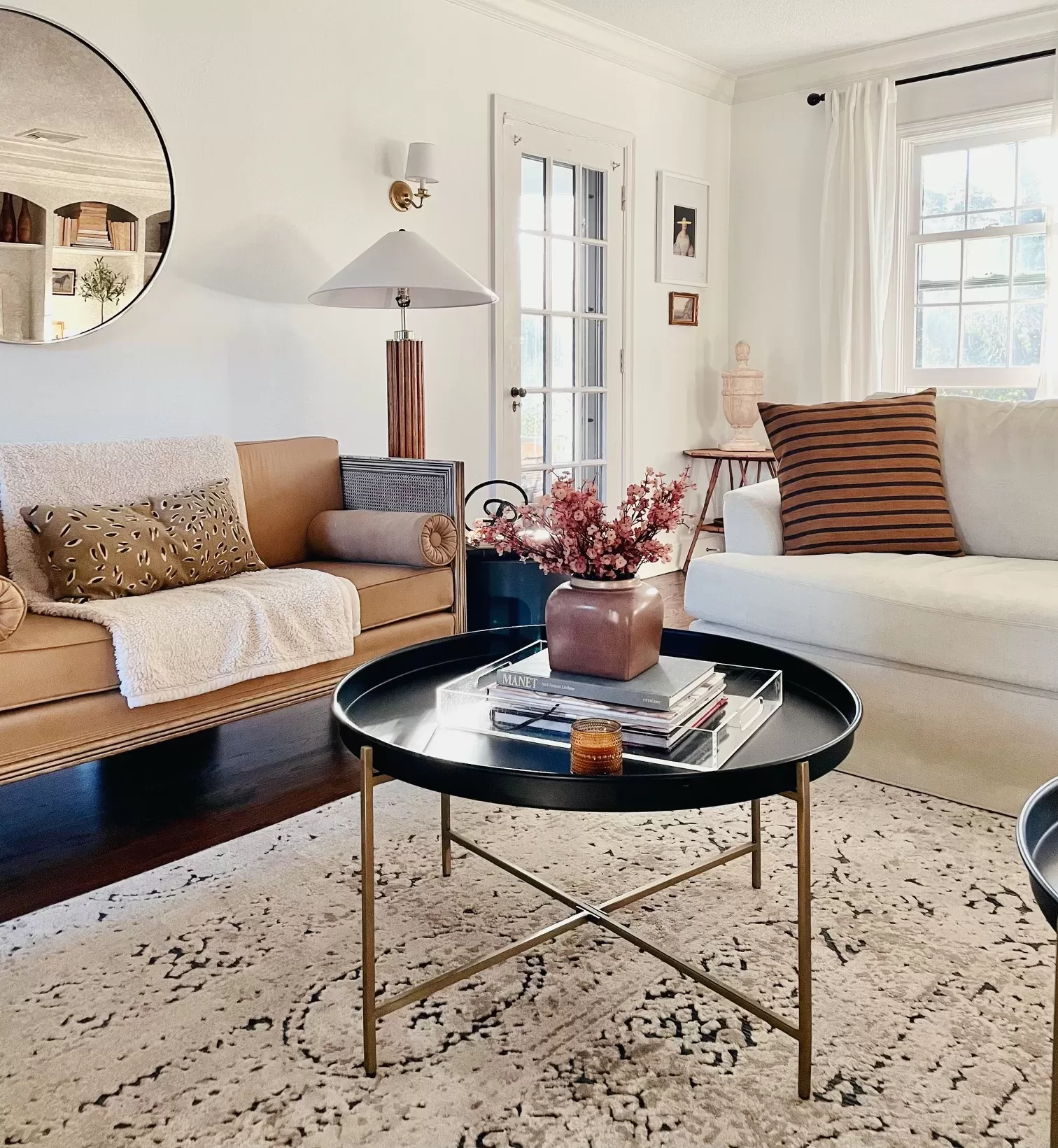
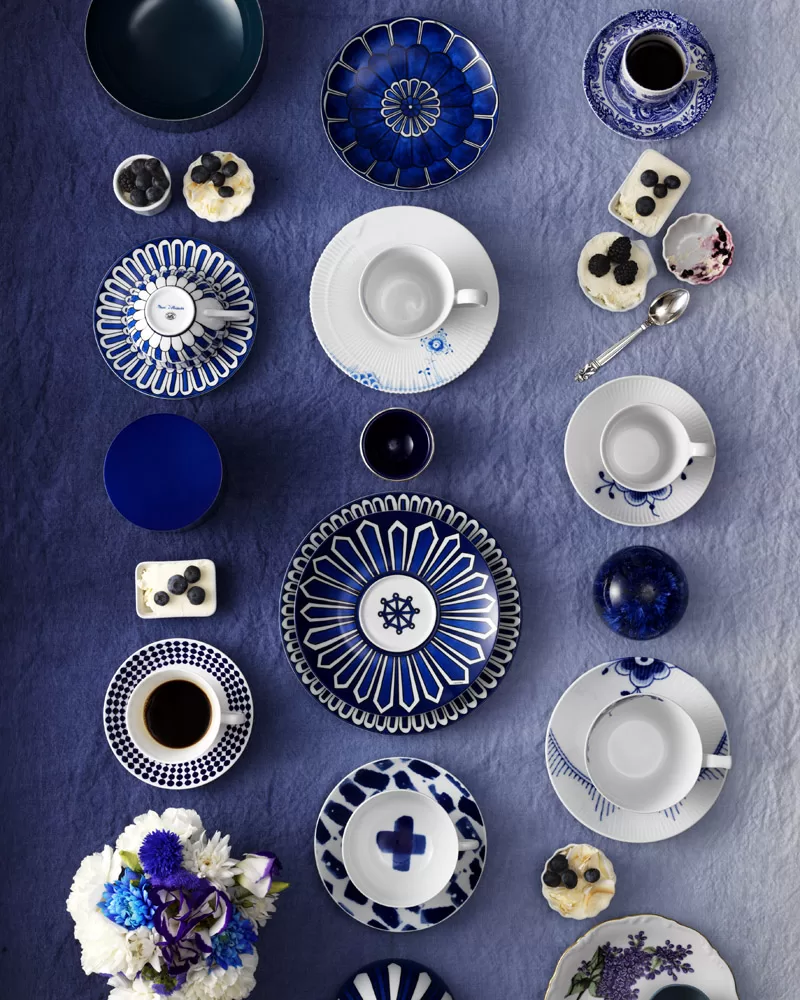
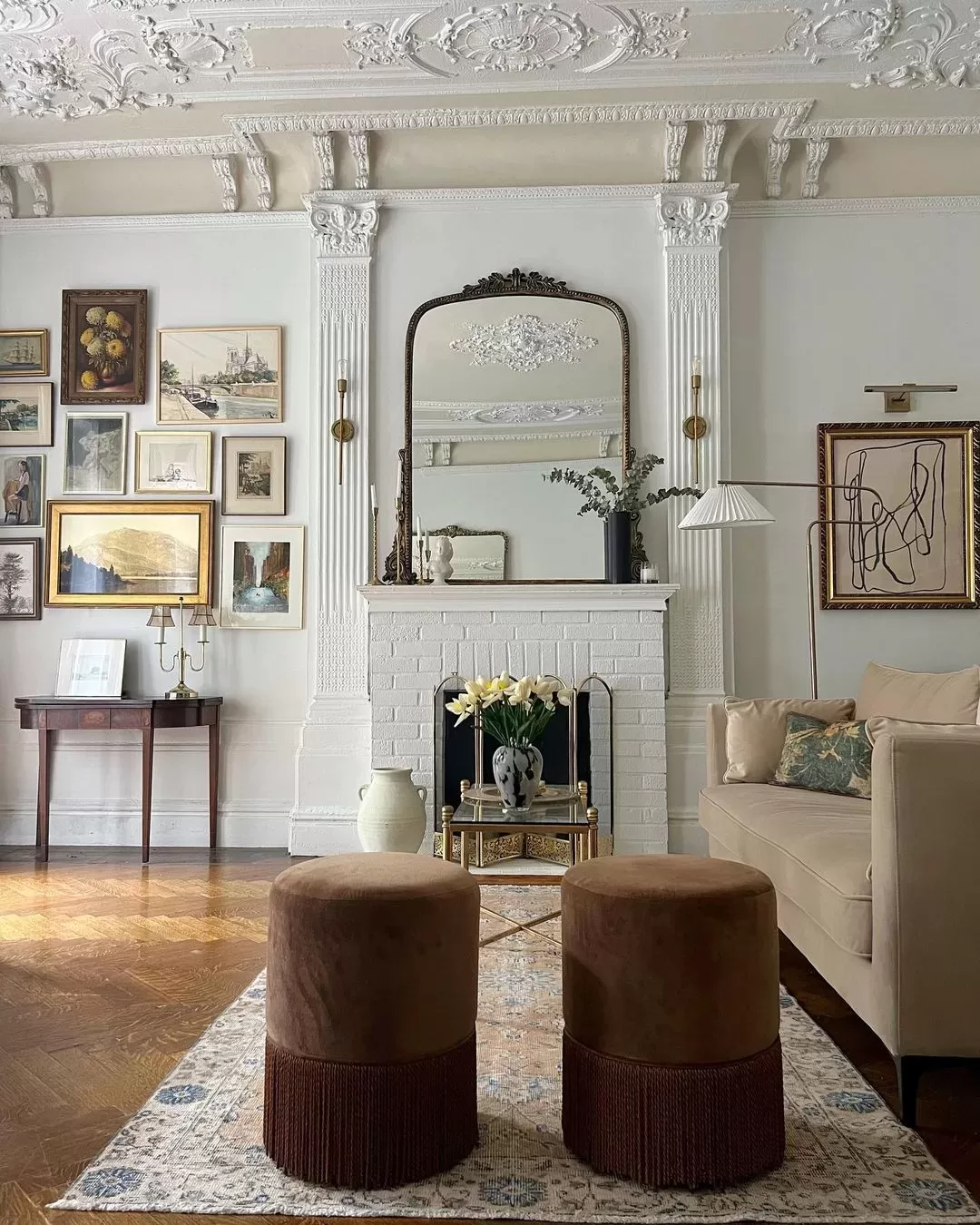
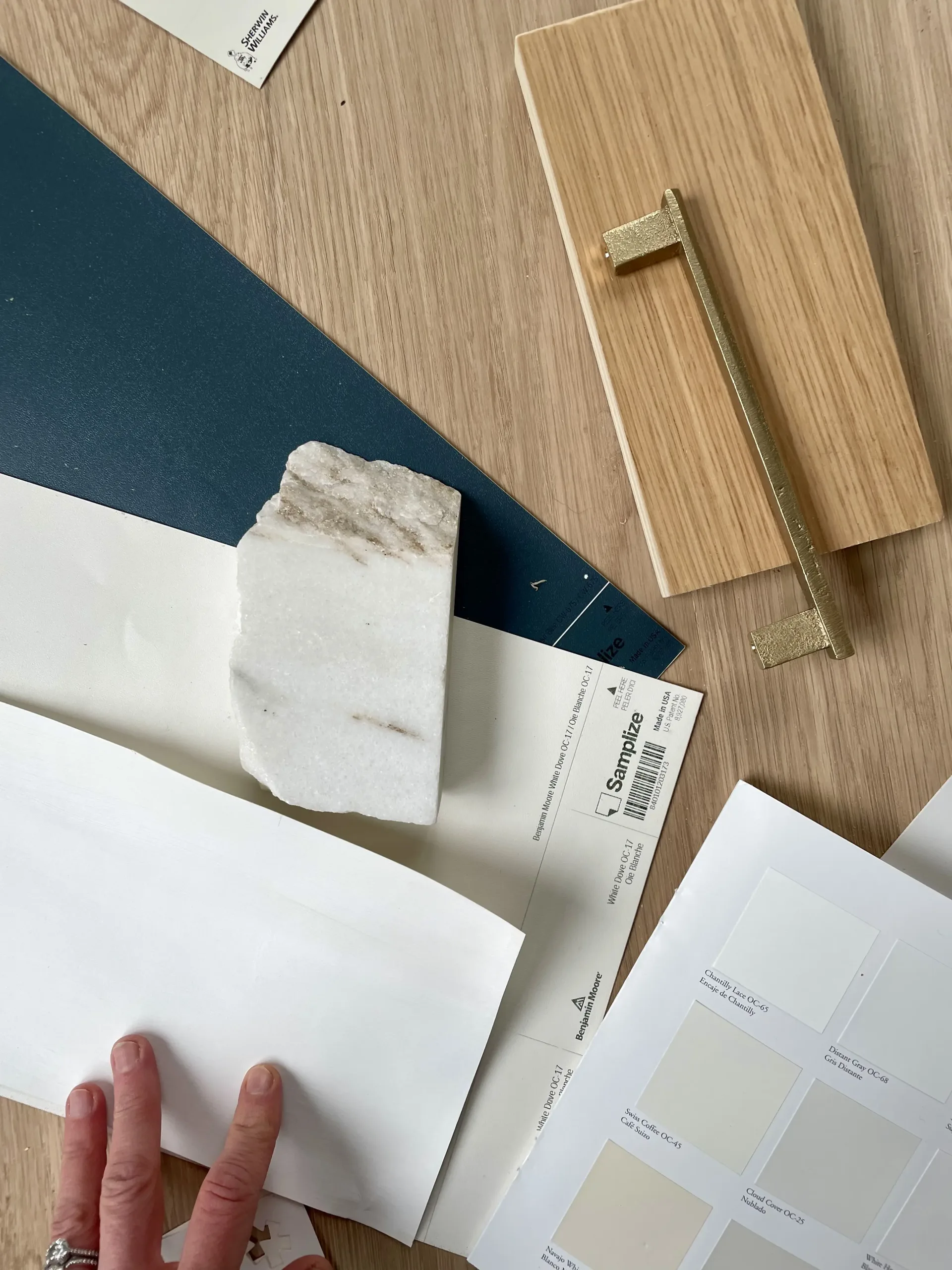
2 Comments